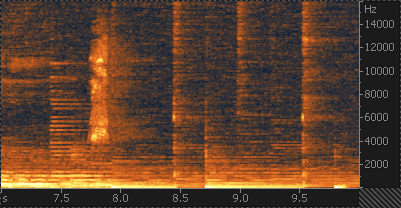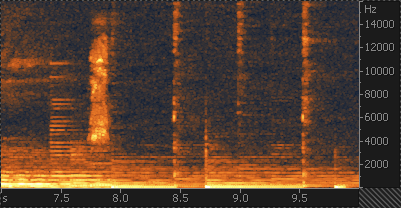Audio Engineering Society 123rd Convention
Oct 5-8, 2007
New-York, USA
Alexey Lukin and Jeremy Todd presented a paper "Suppression of Musical Noise Artifacts in Audio Noise Reduction by Adaptive 2D Filtering". It discusses suppression of objectionalble musical noise artifacts resulting from the spectral subtraction method for broadband noise reduction. The idea of the method is to use a combination of Non-Local Means and DFT Thresholding algorithms to smooth the 2D map of SNR ratios in spectral subtraction.
Abstract
Spectral attenuation algorithms for audio noise reduction often generate annoying musical noise artifacts. Most existing methods for suppression of musical noise employ a combination of instantaneous and time-smoothed spectral estimates for calculation of spectral gains. In this paper, a 2D approach to the filtering of a time-frequency spectrum is proposed, based on a recently developed Non-Local Means image denoising algorithm. The proposed algorithm demonstrates efficient reduction of musical noise, without creating "noise echoes" artifacts inherent in time-smoothing methods.
To purchase copies of the paper itself, please see the AES website. The full text can also be downloaded here: LukinTodd07.pdf.
PowerPoint Presentation
You can download our PowerPoint presentation given at AES here.
Download PowerPoint Slide Show for Windows: LukinTodd_AES123.pps (690 KB)
Audio Examples and Spectrograms
Here we provide audio examples comparing the algorithms mentioned in our paper. Here's the WAV file with a fragment of the audio corrupted by white noise.

Figure 1. Spectrogram of noisy audio
To clean the audio, a spectral subtraction method is typically used, but it can produce "musical noise" artifacts manifesting themselves as spurious bursts of energy in random places of the audio spectrum. The results are given in a WAV file whose spectrogram is shown below in Figure 2.

Figure 2. Spectrogram of the denoised audio showing musical noise artifacts
The most common way to reduce the musical noise artifact is Ephraim-Malah method that uses "a-priori" (time-smoothed) and "a-posteriori" (instantaneous) energy estimates to compute the gain function for spectral subtraction. The musical noise is effectively smoothed out, but at the expense of some smearing of transients and "noisy tails" - regions of unsuppressed noise after abrupt signal fades. The results are given in a WAV file whose spectrogram is shown below in Figure 3.

Figure 3. Spectrogram of the audio denoised by the Ephraim-Malah method
In the paper, we are showing how these problems of Ephraim-Malah method can be addressed by the use of a recently proposed Non-Local Means algorithm for image denoising. Our results are given in a WAV file whose spectrogram is shown below in Figure 4.

Figure 4. Spectrogram of the audio denoised by the proposed method
Demo Application
We have implemented the proposed noise reduction algorithm in iZotope RX restoration application. You can open an audio file, train the noise profile, and apply Denoiser to perform the noise reduction. In the Advanced panel, the "MNS algo" combo box controls the algorithm of musical noise suppression. Select "Advanced" for the Non-Local Means algorithm, "Extreme" for DFTT algorithm, or "Adv+Extreme" for NLM+DFTT algorithm.
Download iZotope RX Demo for Windows or OS X.
